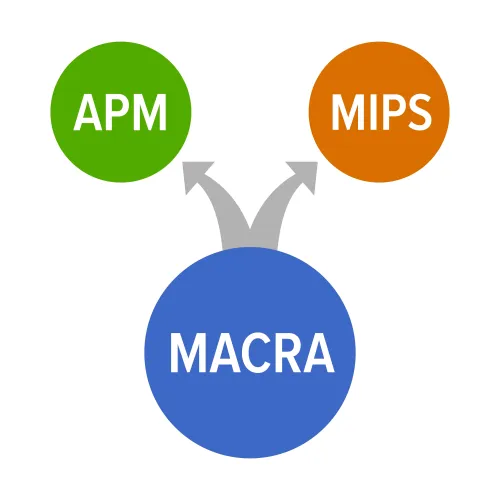Boost Depression Dx With These Coding Tips
Stellar provider documentation will help with code choices. Part B providers are on the front lines when it comes to combating depression. And that’s why it’s crucial that you know the basics on diagnosis coding for addressing depression and anxiety. With an estimated 7.8 percent of adults in the United States reporting they have suffered from “at least one major depressive episode,” (Source: www.nimh.nih.gov/health/ statistics/ major-depression), chances are you have encountered depression diagnoses in your provider’s notes more than once. So, here are a few pointers for you to use the next time you have to code it. Know How to Code for Depression Levels “This can be a little tricky, as the level of depression will play a role in determining the diagnosis,” says Chelle Johnson, CPMA, CPC, CPCO, CPPM, CEMC, AAPC Fellow, billing/credentialing/auditing/coding coordinator at County of Stanislaus Health Services Agency in Modesto, California. But what constitutes depression being mild, moderate, or severe? Though your provider will — and must — be the one who makes the ultimate determination, some insight into how providers arrive at their decision is useful to aid in coding accuracy. A provider’s depression diagnosis depends on the number of symptoms exhibited by the patient. In order for a provider to consider the diagnosis, the patient must first have one or both of two core symptoms: Then, the patient must exhibit additional symptoms from the following before a provider can make a final determination: (Source: the National Collaborating Center for Mental Health (NCCMH) www.ncbi.nlm.nih.gov/books/NBK82926/). “Three or more symptoms indicate a very high probability of major depression,” according to NCCMH. Appreciate How Duration and Course Factor Into the Diagnosis The length of the patient’s depressive episodes will also be reflected in the ICD-10 code choice. “Traditionally the minimum duration of persistent symptoms for major depression is 2 weeks and for chronic depression (or dysthymia) 2 years,” according to NCCMH. So, you will use F34.1 (Dysthymic disorder) for patients with chronic depression, as one of the code’s synonyms, persistent depressive disorder, instructs. Along with duration, there is the course of the depression, which is typically described as either “single episode” or “recurrent.” “Conventionally, classification has distinguished between a single episode and two or more episodes (recurrent depression),” according to NCCMH, though your provider’s determination will rest on the number of episodes and their pattern (e.g., the length of time between them). As the NCCMH notes, “someone who has had two episodes separated by decades has a different clinical course from someone with three episodes in a few years.” Adding it all up: “If the provider determines the patient has a major depressive disorder, then you would look at F32.- (Depressive episode) if the episode is single. And if the patient has a recurrent major depressive disorder, you should look to F33.- (Major depressive disorder, recurrent),” Johnson elaborates. But you should code a mild, single episode of major depressive order to F32.0 (Major depressive disorder, single episode, mild). And “if the depression is mild or not persistent, then you can select F41.8 (Other specified anxiety disorders),” Johnson advises. Recognize When Anxiety and Depression Are Separate or Linked Sometimes, your provider’s notes may state a patient has depression and anxiety, or depression with anxiety. When this happens, you should not assume the two conditions are linked unless your provider indicates they are. Instead, following guidance provided by the AHA ICD-10-CM Coding Clinic, you should assign a code for both the depression and the anxiety as there are no Excludes1 notes for either code groups preventing you from doing so. In such instances, you can assign codes such as F32.9 (Major depressive disorder, single episode, unspecified) and F41.9 (Anxiety disorder, unspecified) (Source: AHA ICD-10-CM Coding Clinic, vol. 8, no. 1, 2021). But if your provider does state the two conditions are linked, Coding Clinic guidance tells you to use F41.8, which includes anxiety depression (mild or not persistent), mixed anxiety and depressive disorder, and anxiety hysteria among its synonyms. Understand What Constitutes Partial and Full Remission Full remission occurs when two months have elapsed either without the patient experiencing significant symptoms or not meeting major depression criteria, while partial remission entails either of the above without two months elapsing, per NCCMH. However, clinical determinations of partial and full remission should again be left up to your provider. So, you will need to look to documentation before assigning F32.4 (Major depressive disorder, single episode, in partial remission), F32.5 (Major depressive disorder, single episode, in full remission), F33.41 (Major depressive disorder, recurrent, in partial remission), or F33.42 (Major depressive disorder, recurrent, in full remission). Put it All Together With This Example Your provider evaluates an established 60-year-old female patient for complaints of depressed mood and problems with concentration. She says she has been experiencing these symptoms ever since her husband fell ill three months back, although the symptoms seemed to have increased in the past month or so. The patient also told your provider she had trouble sleeping at night. Further, she complained her sleep disturbances and concentration difficulties were affecting her ability at work and she was facing the likelihood of getting fired from her job. Your clinician also noted the patient appeared to get irritable for no reason and sometimes appeared listless and tired during the encounter. Based on the results of evaluation screening questionnaires and from history and present signs and symptoms, your clinician diagnosed the patient with moderate major depressive disorder, single episode. Report the diagnosis with F32.1 (Major depressive disorder, single episode, moderate).





